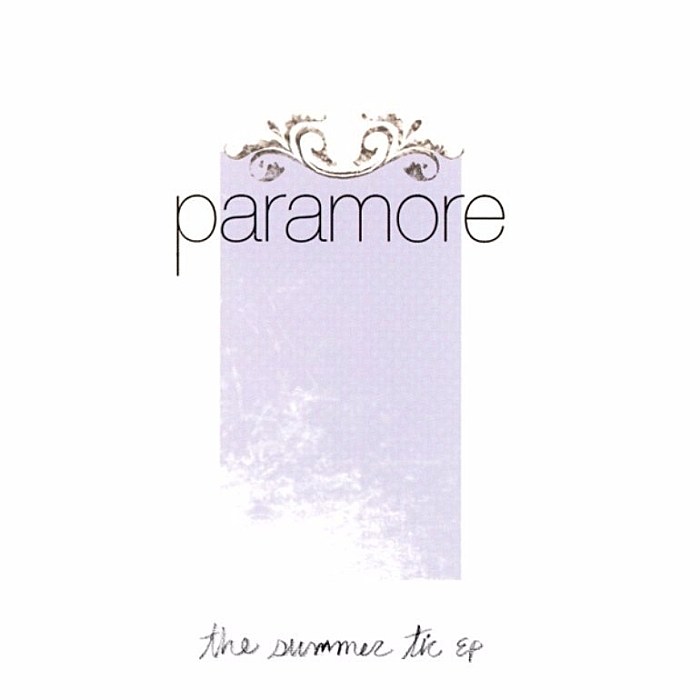As we approach the 15th anniversary of Paramore's debut, this edition of In Defense of the Genre looks at their full studio discography and how they evolved and transcended their emo/pop punk roots like few others.
--
Hayley Williams released her first-ever solo album with the excellent Petals For Armor earlier this year, and because of the pandemic, she pushed her solo tour back to 2021, so we know Hayley's dedicating at least the next two years to her solo career, but Paramore is definitely not done. Hayley and guitarist Taylor York told NME that Paramore have a new album in the works, and that it finds them returning to the music they were inspired by when the band was starting out. As for exactly what that meant, she clarified in a tweet, "We never believed we were pop-punk in the first place. We are just Paramore. So there’s nothing to return to... except for the studio, when we’re ready." She then shared this playlist of some of those older faves including songs by Trail of Dead, Failure, Hum, Sunny Day Real Estate, Death Cab, Filter, Elliott Smith, Sparta, Jimmy Eat World, Far, and more:
The idea of a new Paramore album is very exciting, but since it might be a while, and since it feels like we're at a crossroads in Paramore's career, now seems like a good time to look back on all the music they've released so far. Paramore have evolved like few other bands who started out in the mid 2000s Warped Tour scene; each album has been a clear progression from the one before it, and sometimes -- as in the case of their career-best 2017 album After Laughter -- those progressions were pretty drastic. They've proven to have serious longevity, and despite it being 15 years since their debut album (it actually turns 15 this month, on July 26), Paramore still have that same hunger that new bands have. That "there’s nothing to return to... except for the studio" attitude keeps them sounding fresh with each new album. I already can't wait to hear what they do next.
Paramore's constant evolution has helped them continue to gain new fans, so if you're new to the band, or just never dove deep into their discography, or just feel like diving back in, I've put together this guide to Paramore's five studio albums and their one proper EP. The list is presented in chronological order and is unranked. Each album is worthy for its own reasons; if you haven't already, I recommend spending time with each one.
Read on for the list...
All We Know Is Falling (2005)
Paramore's debut album hit in July of 2005, the video for lead single "Pressure" landed shortly afterwards, and Paramore were instantly the talk of the pop punk/emo scene. Bands who had helped pave the way for them like blink-182, Jimmy Eat World, and Fall Out Boy had all put out rougher material early on before arriving at the sounds they're best known for, but Paramore -- who were still in their teens at the time -- knocked it out of the park on the first swing. It only took a few seconds into “Pressure” for it to become clear that Paramore were a force to be reckoned with. An ultra-catchy guitar riff kicks things off, Zac Farro comes barging in with one of his many airtight drum fills, and the song shoots off into pop punk bliss. Things only get better when Hayley introduces the world to her now-iconic voice, and the song levels up once again when it explodes into its floor-shaking, half-time chorus. Hayley's powerhouse hook is undeniable, and when guitarist Josh Farro throws in that little major seventh bend, you really hear how Paramore were pulling from spacier post-hardcore early on and not just straight-up pop punk.
"Pressure" would've been enough on its own to make Paramore the Warped Tour/Hot Topic scene's new buzz band, but All We Know Is Falling didn't stop there. It birthed two more scene-dominating singles ("Emergency" and "All We Know") and the remaining seven songs were nothing to scoff at either. It's one of those solid ten-song albums where the whole thing just rocks from start to finish with no filler in sight. They change it up just enough to keep things interesting -- from the driving pop punk of the singles to the balladry of the last three songs, and some cool in-between stuff like the mid-tempo "Brighter" and the half dancey, half spacey "Here We Go Again" -- but they also stick to one main vibe. It's an album where if you like one song, you'll almost definitely like the rest.
Paramore did get a lot better as they went on, and because of that, the narrative that frequently surrounds their debut is that it's a promising first draft of a sound they'd perfect on its 2007 followup Riot!. It's definitely a little more straightforward than Riot!, and the production makes it sound a little more dated, but this narrative leaves out how much of an instant classic All We Know Is Falling was when it dropped in 2005, and how well these songs have aged.

